This article needs additional citations for verification .(April 2021) |
The Air Member for Personnel (AMP) is the senior Royal Australian Air Force officer who is responsible for personnel matters.
This article needs additional citations for verification .(April 2021) |
The Air Member for Personnel (AMP) is the senior Royal Australian Air Force officer who is responsible for personnel matters.
The following officers have served as Air Member for Personnel:
The following officers have served as Chief of Air Force Personnel:

The Desert Air Force (DAF), also known chronologically as Air Headquarters Western Desert, Air Headquarters Libya, the Western Desert Air Force, and the First Tactical Air Force (1TAF), was an Allied tactical air force created from No. 204 Group RAF under RAF Middle East Command in North Africa in 1941 to provide close air support to the British Eighth Army against Axis forces. Throughout the Second World War, the DAF was made up of squadrons from the Royal Air Force (RAF), the South African Air Force (SAAF), the Royal Australian Air Force (RAAF), the United States Army Air Forces (USAAF) and other Allied air forces.

Air Marshal Sir Richard Williams,, is widely regarded as the "father" of the Royal Australian Air Force (RAAF). He was the first military pilot trained in Australia, and went on to command Australian and British fighter units in World War I. A proponent for air power independent of other branches of the armed services, Williams played a leading role in the establishment of the RAAF and became its first Chief of the Air Staff (CAS) in 1922. He served as CAS for thirteen years over three terms, longer than any other officer.
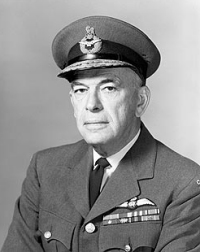
Air Chief Marshal Frank Robert Miller was a Canadian airman, the last Chairman of the Chiefs of Staff Committee in 1964, the first chief of the Defence Staff from 1964 until 1966, and deputy minister of National Defence. He held a range of Air Force training appointments during World War II.

The Central Flying School (CFS) is the Royal Air Force's primary institution for the training of military flying instructors. Established in 1912 at the Upavon Aerodrome, it is the longest existing flying training school. The school was based at RAF Little Rissington from 1946 to 1976. Its motto is Imprimis Praecepta, Latin for "The Teaching is Everlasting".
Air Chief Marshal Sir John Miles Steel, was a senior Royal Air Force commander.
Iraq Command was the Royal Air Force (RAF) commanded inter-service command in charge of British forces in Iraq in the 1920s and early 1930s, during the period of the British Mandate of Mesopotamia. It continued as British Forces in Iraq until 1941 when it was replaced by AHQ Iraq. It consisted of Royal Air Force, Royal Navy, British Army, Commonwealth and locally raised units, commanded by an RAF officer normally of Air Vice-Marshal rank.

The Air Member for Personnel (AMP) is the senior Royal Air Force officer who is responsible for personnel matters and is a member of the Air Force Board. The AMP is in charge of all aspects of recruiting, non-operational flying and ground training, career management, welfare, terms, and conditions of service, and resettlement for RAF regular, reserve, and civilian staffs worldwide.

Chief of Air Force (CAF) is the most senior appointment in the Royal Australian Air Force (RAAF), responsible to the Chief of the Defence Force (CDF) and the Secretary of the Department of Defence. The rank associated with the position is air marshal (three-star). The role encompasses "the delivery of aerospace capability, enhancing the Air Force's reputation and positioning the Air Force for the future". It does not include direction of air operations, which is the purview of the Air Commander Australia, a two-star position responsible directly to CDF in such circumstances but nominally reporting to CAF.

Air Chief Marshal Sir Charles Stuart Burnett, was a senior commander in the Royal Air Force during the first half of the 20th century. He was Air Officer Commanding Iraq Command during the early 1930s. During the Second World War, he served as Chief of the Air Staff of the Royal Australian Air Force.

Air Vice Marshal Stanley James (Jimmy) Goble, CBE, DSO, DSC was a senior commander in the Royal Australian Air Force (RAAF). He served three terms as Chief of the Air Staff, alternating with Wing Commander Richard Williams. Goble came to national attention in 1924 when he and fellow RAAF pilot Ivor McIntyre became the first men to circumnavigate Australia by air, journeying 8,450 miles (13,600 km) in a single-engined floatplane.

Air Vice-Marshal William Hopton Anderson, was a senior commander in the Royal Australian Air Force (RAAF). He flew with the Australian Flying Corps in World War I, earning the Distinguished Flying Cross and the Belgian Croix de guerre for his combat service with No. 3 Squadron on the Western Front in 1917. The following year he took command of No. 7 (Training) Squadron and, later, No. 3 Squadron. Anderson led the Australian Air Corps during its brief existence in 1920–21, before joining the fledgling RAAF. The service's third most-senior officer, he primarily held posts on the Australian Air Board in the inter-war years. He was appointed a Commander of the Order of the British Empire in 1934, and promoted to air commodore in 1938.

The Royal Air Force College (RAFC) is the Royal Air Force military academy which provides initial training to all RAF personnel who are preparing to become commissioned officers. The College also provides initial training to aircrew cadets and is responsible for all RAF recruiting along with officer and aircrew selection. Originally established as a naval aviation training centre during World War I, the College was established as the world's first air academy in 1919. During World War II, the College was closed and its facilities were used as a flying training school. Reopening after the War, the College absorbed the Royal Air Force Technical College in 1966.
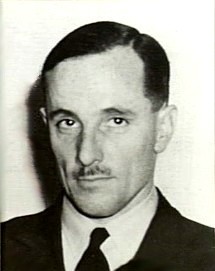
Air Vice-Marshal Joseph Eric Hewitt, was a senior commander in the Royal Australian Air Force (RAAF). A Royal Australian Navy officer who transferred permanently to the Air Force in 1928, he commanded No. 101 Flight in the early 1930s, and No. 104 (Bomber) Squadron RAF on exchange in Britain shortly before World War II. Hewitt was appointed the RAAF's Assistant Chief of the Air Staff in 1941. The following year he was posted to Allied Air Forces Headquarters, South West Pacific Area, as Director of Intelligence. In 1943, he took command of No. 9 Operational Group, the RAAF's main mobile strike force, but was controversially sacked by the Chief of the Air Staff, Air Vice Marshal George Jones, less than a year later over alleged morale and disciplinary issues.

Air Vice Marshal Henry Neilson Wrigley, CBE, DFC, AFC was a senior commander in the Royal Australian Air Force (RAAF). A pioneering flyer and aviation scholar, he piloted the first trans-Australia flight from Melbourne to Darwin in 1919, and afterwards laid the groundwork for the RAAF's air power doctrine. During World War I, Wrigley joined the Australian Flying Corps and saw combat with No. 3 Squadron on the Western Front, earning the Distinguished Flying Cross; he later commanded the unit and published a history of its wartime exploits. He was awarded the Air Force Cross for his 1919 cross-country flight.
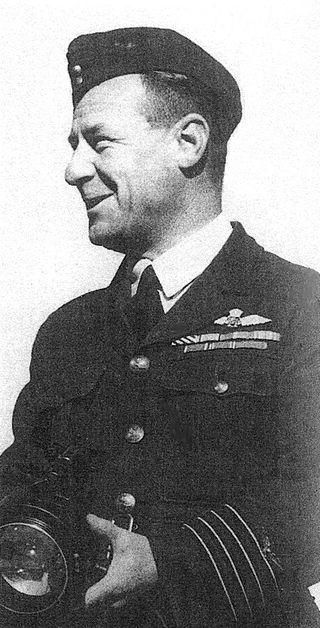
Air Commodore Hippolyte Ferdinand (Frank) De La Rue, CBE, DFC was a senior commander in the Royal Australian Air Force (RAAF). Joining the Mercantile Marine as a youth, he became a pilot in Britain's Royal Naval Air Service during World War I. In 1918, he was given command of No. 223 Squadron in the newly formed Royal Air Force. The following year he took charge of No. 270 Squadron RAF in Egypt. Returning to Australia, De La Rue joined the short-lived Australian Air Corps in 1920, and became a founding member of the RAAF in March 1921. Specialising in maritime aviation, he led seaplane formations based at Point Cook, Victoria, during the 1920s and early 1930s.

The Air Secretary and Chief of Staff, Personnel is the Royal Air Force officer with responsibility for appointments, promotions, postings, and discipline of high ranking members of the British air force. From 1978 to 1983 the Air Secretary was more often referred to as "Air Officer Commanding Royal Air Force Personnel Management Centre". It is a senior RAF appointment, held by an officer holding the rank of air vice-marshal and appointed by the sovereign. The Air Secretary's counterpart in the British Army is the Military Secretary and the Royal Navy equivalent is the Naval Secretary.
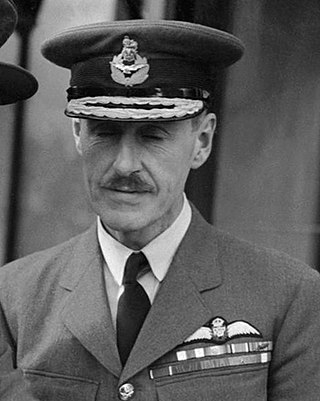
Air Vice Marshal Charles Hubert Boulby Blount, was a British soldier, airman and first-class cricketer.
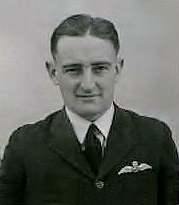
Air Vice Marshal Frank Headlam, was a senior commander in the Royal Australian Air Force (RAAF). Born and educated in Tasmania, he joined the RAAF as an air cadet in January 1934. He specialised in flying instruction and navigation before the outbreak of World War II. In April 1941, he became commanding officer of No. 2 Squadron, which operated Lockheed Hudsons. The squadron was deployed to Dutch Timor in December, and saw action against Japanese forces in the South West Pacific. After returning to Australia in February 1942, Headlam held staff appointments and training commands, finishing the war a group captain.

The Air Board, also known as the Administrative Air Board, or the Air Board of Administration, was the controlling body of the Royal Australian Air Force (RAAF) from 1921 to 1976. It was composed of senior RAAF officers as well as some civilian members, and chaired by the Chief of the Air Staff (CAS). The CAS was the operational head of the Air Force, and the other board members were responsible for specific areas of the service such as personnel, supply, engineering, and finance. Originally based in Melbourne, the board relocated to Canberra in 1961.
{{cite web}}: CS1 maint: archived copy as title (link)